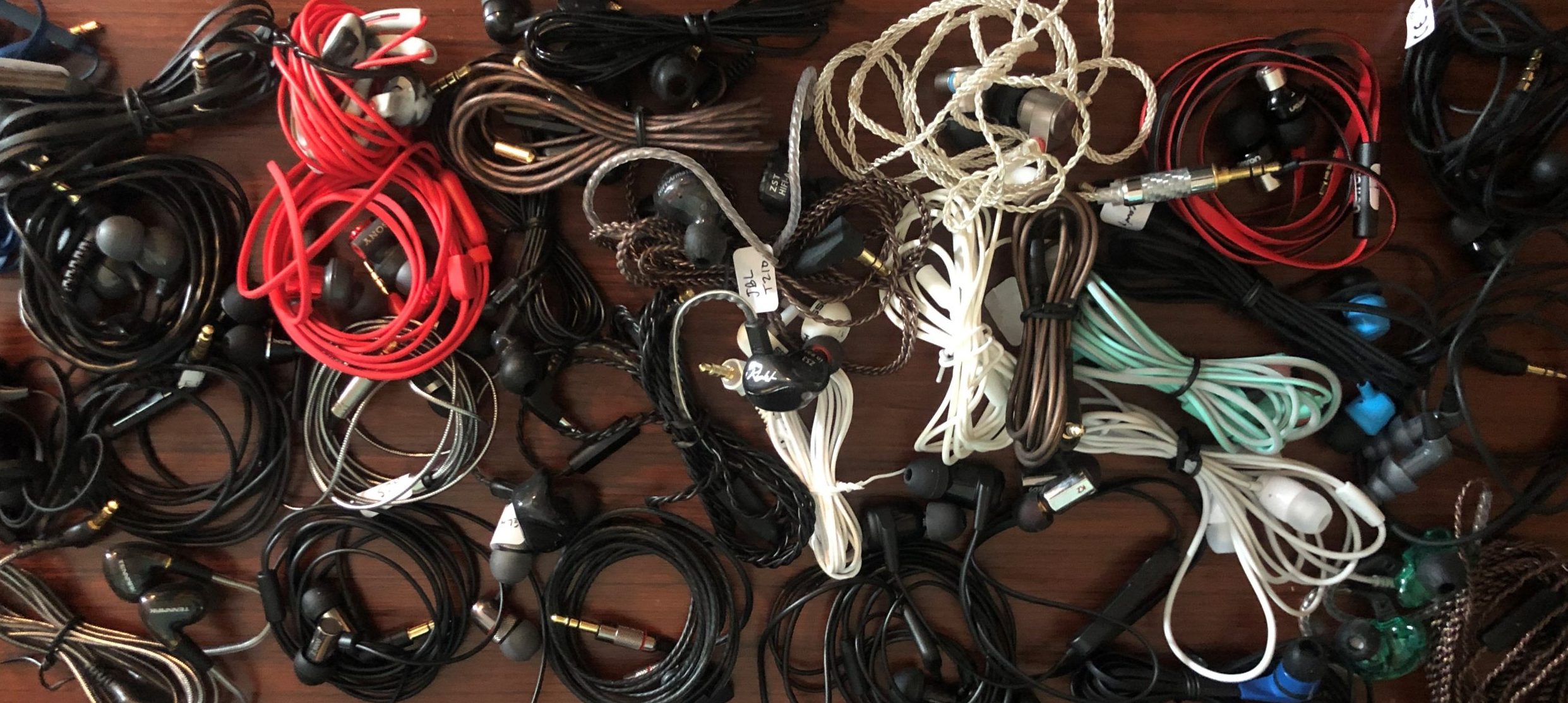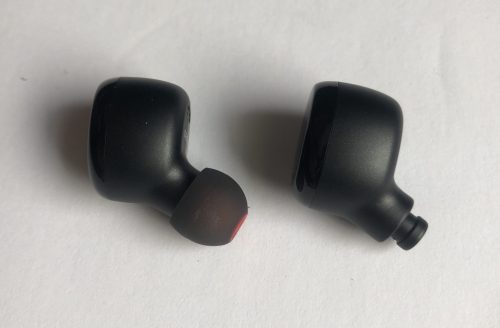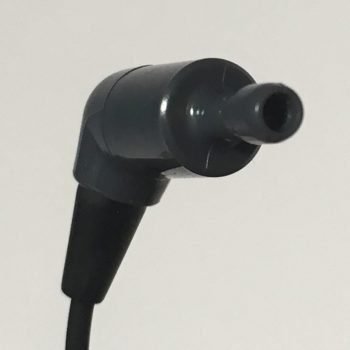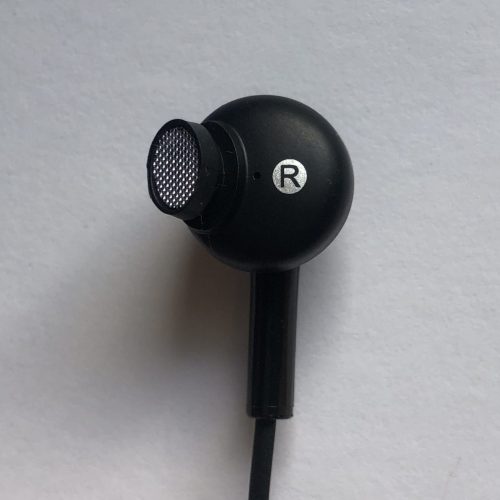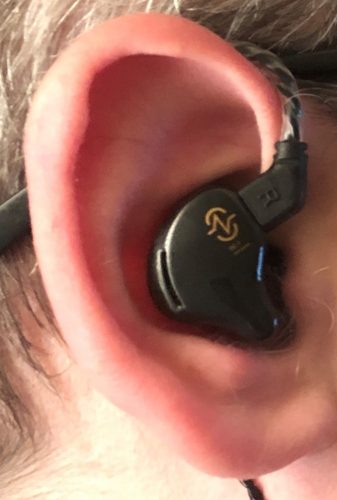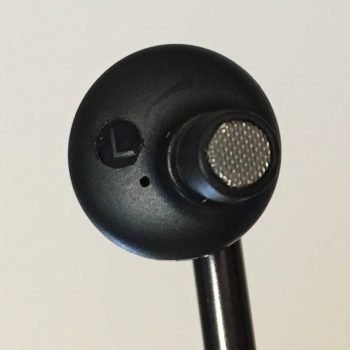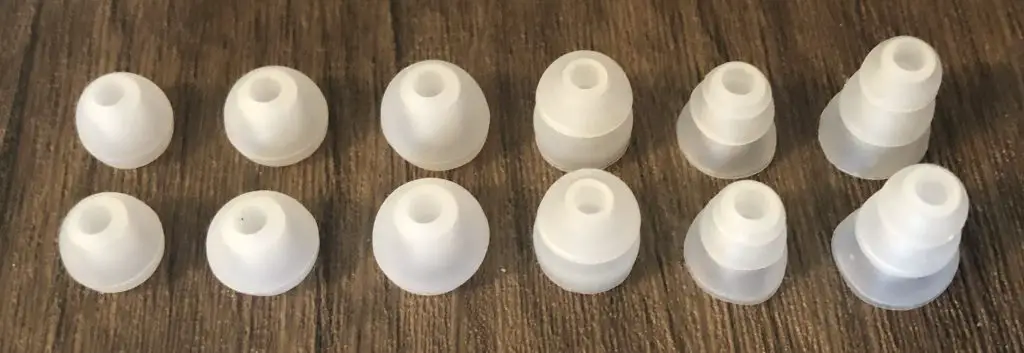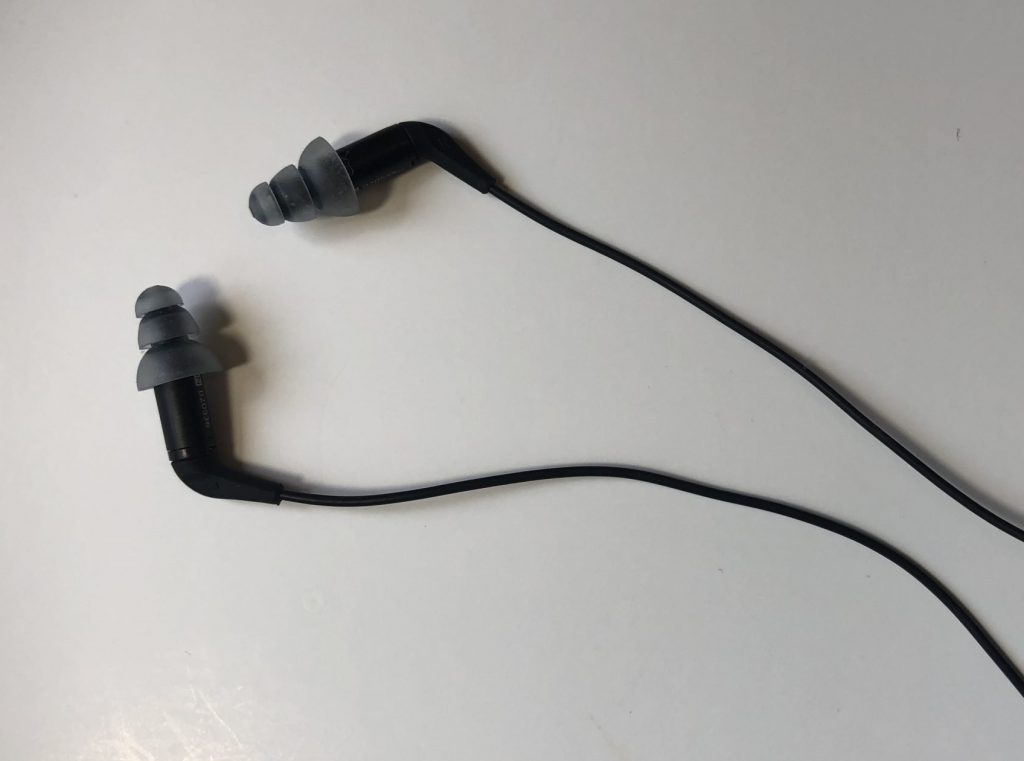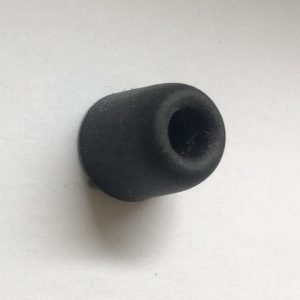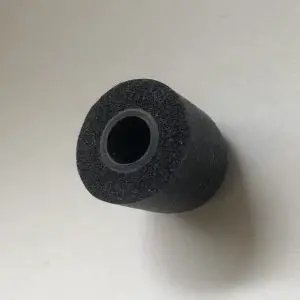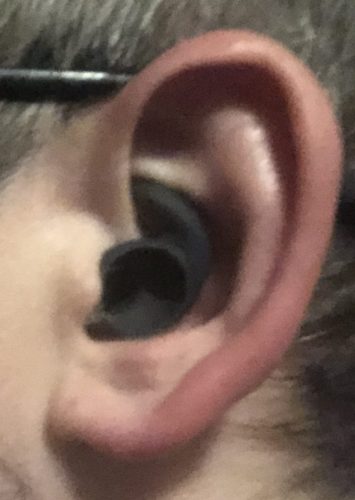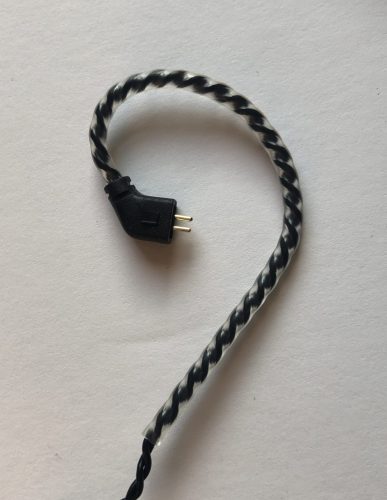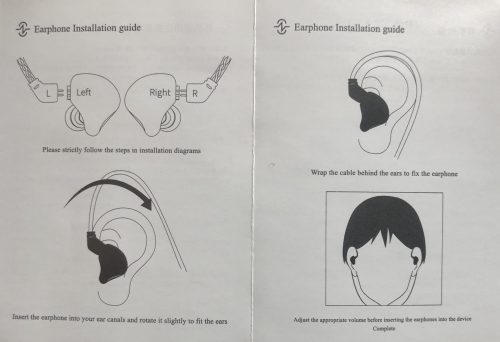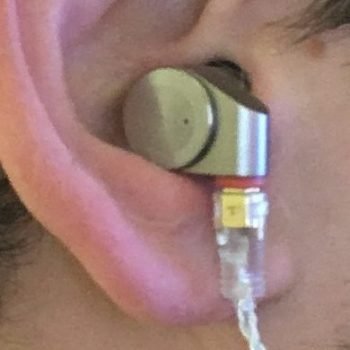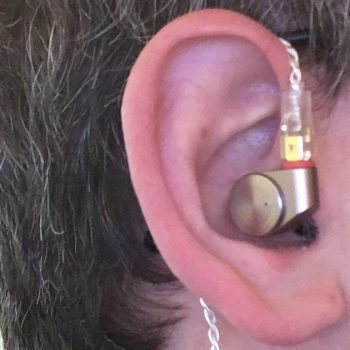I have personally reviewed, tested, or otherwise used a lot of different earbuds over the years, and through it all something that has remained true is that I am an absolute stickler for fit, especially when it comes to “active use” of earbuds: running, working out, mowing the lawn, doing chores around the house, or whatever else.
Earbuds that feel insecure, or prone to slippage, or like they’re hanging out and down, on the verge of slowly falling out, etc… stuff like this annoys me very quickly, and at this point a fit anything short of excellent is usually a deal breaker for me, even with budget earbuds.
In this article I’m going to discuss everything you need to know to ensure that your earbuds fit great, feel great, stay securely in place, and as a result sound great, even if you’re active and moving around a lot.
Why Do My Earbuds Not Fit and Keep Falling Out? (And How to Stop That)
I have tried just about every type and style of earbuds, tips, cables, accessories, and pretty much anything else that exists in this niche of audio. Based on that experience, here’s what I think, in summary, are the main causes of poor earbud fit that sometimes results in them falling out:
- Bad ergonomic design – some earbuds just don’t fit well and feel terrible, even if they might look small, slick, or otherwise comfortable.
- Badly designed tips – still a potential deal breaker, but less likely since tips can be removed and replaced.
- Tips are too small for you – many people aren’t actually aware of how firm/tight a proper seal should feel.
- Wearing the earbuds incorrectly – many earbuds are actually designed to be worn in a specific way that isn’t always intuitive or obvious.
- Not utilizing available accessories – there are a lot of different accessory products (or simple diy “hacks”) that can fix fit issues.
- Something’s just not right for you personally – ears, heads, ect., come in all different shapes and sizes, and earbud fit does somewhat come down to finding something that works for you.
Now I’ll fully expound on each of these issues as well as discuss solutions.
Some Earbuds Just Have Really Bad Ergonomic Design
Good ergonomics means that the earbud is physically shaped in a way that will fit securely and comfortably in your ear. In my experience, many companies clearly put appreciable effort into this because their products always seem to fit properly and feel good to wear. Other companies, for whatever reason, seem to neglect this critical aspect of earbud design because their products are just inexplicably bad from an ergonomic standpoint and trying to wear them feels like trying to fit a square peg into a round hole.
Neglect of design ergonomics is, in my opinion, by far the greatest cause of poor fit issues. If earbuds have a bad ergonomic design, there’s rarely much you can do to “hot fix” it in my experience, and usually the best thing to do is just return them if you still can and get something else. Competition and selection of earbuds is vast, and many brands and products fit great, so there’s no reason to settle for anything less, and frankly there’s no excuse at this point for any company to fall short in this aspect when so many other companies do a really great job at it, even with the under ~$20 budget earbuds.
Earbud Size and Weight Does Not Actually Matter Much (If at All) For Fit
You’d think that heavy and bulky looking earbuds would be more prone to bad fit and falling out than small and light ones, but that is not really the case in my experience.
I’ve tried on and used earbuds of all shapes and sizes, and some of the most massive looking ones I’ve seen have fit great, while some of the other small and slick looking ones fit terribly.
Make Sure the Nozzle Is Long/Deep Enough
The nozzle of an earbud is the portion that holds the tip and needs to go into your ear canal:
If there’s one specific aspect of earbud design that I’d pinpoint as being the primary cause of bad fit issues it’s the nozzles being too short/shallow. Picking earbuds that have nozzles of appreciable length, like at least 5 millimeters, is I’d say the greatest way to improve the chances of the earbuds fitting well.
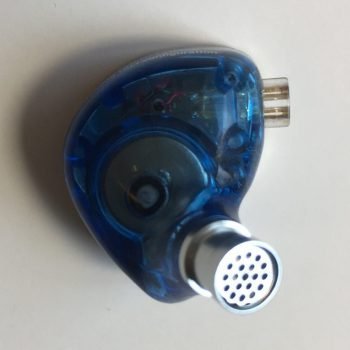
Secondarily, I would opt for nozzles that have a standard ~10mm circular shape, mainly because you will have vastly more options for replacement tips beyond what comes included with the earbuds. There are some earbuds – and I honestly have no idea why some manufacturers do this – that have weird novelty style off-shape nozzles that in my experience always seem to, in addition to needlessly limiting replacement tip options, make fit worse.
It’s unfortunately rare for earbud sales pages (and a lot of other review platforms as well for some reason) to actually show pictures of the nozzles of earbuds with the tips removed, but I still strongly recommend trying to figure out what shape/style a nozzle is before buying any pair of earbuds. I always try to take detailed pictures of nozzles even in my budget reviews for that reason.
Contoured Earbud Design Is Better
A contoured design means the bud is actually shaped to fit with the anatomical parts of the ear, mainly the cavity called the concha:
I know I previously said that earbud shape and size generally doesn’t have much of a relationship to good feel and fit in my experience, but I will also say that earbuds that are bulky looking, have an uncontoured and nondescript case shape, and have shallow nozzles is usually three strikes against fit – the buds will likely feel lousy to wear and be prone to slippage and falling out.
Some Earbud Tips Have Bad Ergonomic Design Too
The tip, usually made out of silicone, rubber, or foam, is the piece of an earbud that actually sits flush on the skin of your ear.
In a market that’s becoming increasingly difficult to stand out in (which is great for you the consumer) many earbud companies are now putting effort into designing proprietary tips as well. Some of these tips fit and feel great, but other times, if similarly less effort is put into this aspect of product design, they can fit poorly and just feel lousy.
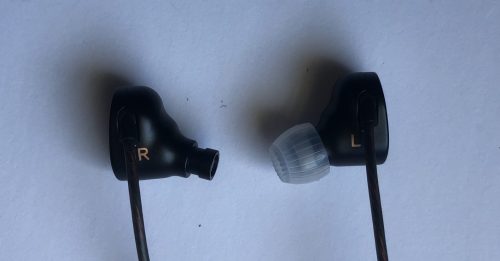
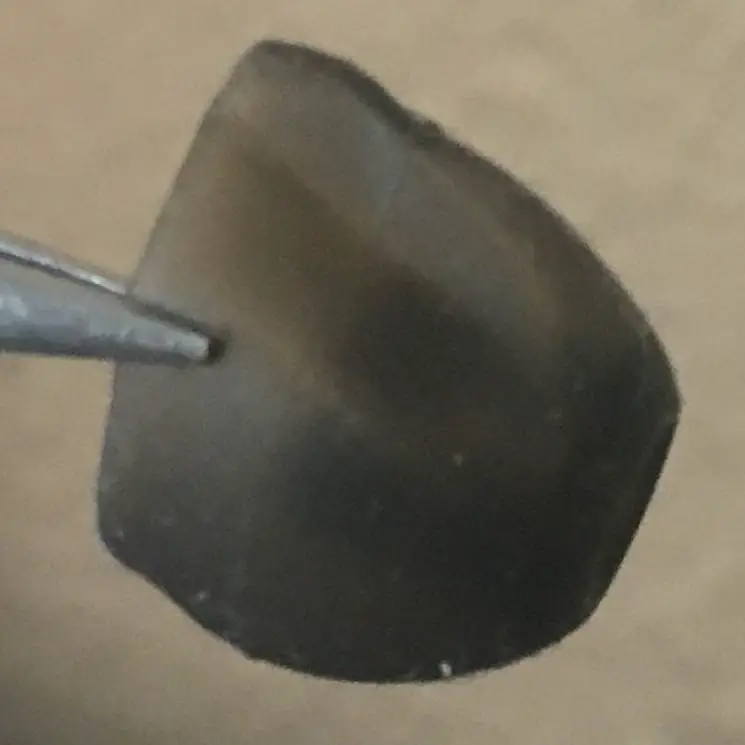
Tip issues are more likely able to be fixed because this part of an earbud can (usually) be easily removed and replaced with a different size, type, and/or style of tip. Almost all modern earbuds, even the ultra-cheap ones, come with at least a couple of different sized replacement tips.
If that doesn’t work, you also have the option of using a tip that comes separately, but doing this isn’t always so reliable since a separate tip might not perfectly fit on an earbuds nozzle. I’ve noticed that, while separate replacement tips can work perfectly great on some earbuds, other times the sound/tuning of earbuds will become just kind of off when not using the included tips, which could be caused by all sorts of random reasons.
The Tips You Are Using Might Be Too Small
The tips of in-ear headphones are designed, in most cases, to exert a fair bit of pressure in order to fit securely and for the earbuds to sonically function properly. When I used the Jabra Elite (reviewed here) fit sensing software, for example, I was surprised that it told me I needed to be using bigger tips with a tighter seal over what I thought felt and sounded fine with smaller tips.
A proper seal is also important for hearing protection and health as well, since that’s how most in-ear headphones achieve proper isolation from external environmental noise. Without that, people are often tempted to just turn up the volume to drown out external noise and that can be dangerous and detrimental towards long term hearing health.
A Different Type of Tip Over Standard Silicone Tips Might Be Better
The style of tip that most earbuds come with, and most people are used to, is the single flange silicone tip:
They’re simple, easy, and can work great, but they’re not the only options:
Alternative Tip Style #1 – Double and Triple Flange Silicone Tips
Double and triple flange tips provide more surface area and thus fit security and isolation. Etymotic Research, the arguable industry leader in earphone isolation and commercial grade hearing protection, uses proprietary triple flange tips on most of their in-ear headphones and earplugs:
The potential downside of double and triple flange tips is that they can feel more intrusive, particularly for those who might be a little squeamish with things going deeper into the ear canal. I use Etymotic earphones for monitoring, and they do work great, but they do feel very deep, tight, and “pressurized” for lack of a better word when inserted properly. Tips like that take getting used to in my experience and aren’t all that great for casual use.
Alternative Tip Style #2- Foam Tips
The general consensus on foam tips, as far as I can seem to tell, is that they can provide technically better fit, security, and isolation over silicone tips. I’ve used foam tips and have liked them, and they’ve fixed fit issues for me in some cases over silicone tips, so they’re definitely a viable option.
But, they’re much more of a hassle to put in – you have to squeeze them, insert them, then wait at least several seconds for the foam to re-expand, as opposed to silicone tips which you can easily take out and pop right back in.
Foam tips also wear out faster and, in my experience, are more prone to getting gunked up by dust, wax, etc. and are much harder if not impossible to fully clean. They’re also generally not weather proof nor protective of moisture against the buds themselves, so for those reasons I wouldn’t recommend using foam tips for exercise/active related use.
Alternative Tip Style #3- Wingtips
Wingtips (not to be confused with shoes) are a style of tip, or sometimes something that can be added onto an earbud that already has a tip, that has a piece that extends out and fits into the part of the outer ear called the cymba concha, like so:
You can see that the piece that extends out adds an additional point of fit and security.
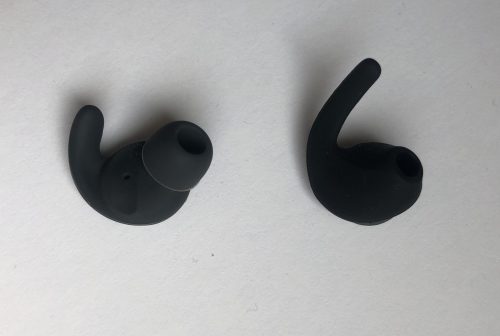
Wingtips come in a variety of shapes, sizes, and styles. They sometimes come included with earbuds in my experience, but usually not, and the trouble with separately purchased wingtips is that they might not fit on a specific pair of earbuds. If you want to try separate wingtips, I’d recommend opting for an “addon” type that can just fit over an earbud that already has a tip on it.
You’re Not Utilizing Accessories That You Could Be
If you’ve tried your best to fit a pair of earbuds properly, and you’ve tried different replacement tips, and you’ve maybe then tried some separately sold tips, but the fit still isn’t quite up to par, there are a number of additional accessories that you can try that could definitely help. You might also find you like using them anyhow even if the earbud fit is already solid.
Optional Earbud Accessory #1 – A Headphone Cable Shirt Clip
Sometimes the headphone cable itself can weigh a pair of (wired) earbuds down enough to create a noticeably uncomfortable sensation of “hanging out and down,” as I call it, or pull down enough to actually cause earbuds to slip or fall out. Nicer cables that have more insulation and less microphonics (when you hear noise transmitted through the cable when it’s rubbed on) also tend to be weightier which is an unfortunately unavoidable trade off.
A simple shirt clip can significantly reduce the weight and inertia of a headphone cable, stopping it from moving around so much and causing sudden jerking or microphonics. Earbuds will sometimes come with one, but you can also buy some separately for cheap and they’re just a good thing to have:
Optional Earbud Accessory #2 – Earhook Pads
Many wired earbuds have specific instructions to be worn inverted, with the wire running up, around, and behind the ear, and will often come with hook pads to support that:
But even if an earbud doesn’t come with explicit instructions to be worn inverted, doing that anyway can still be a great way to achieve a secure and comfortable fit, and indeed there are also separately sold hook pads:
These can be a great way to invert and “ear hook” a headphone cable that either isn’t comfortable (looking at you KZ stock cables) or doesn’t really stay in place because it’s flimsy.
You’re Not Keeping Your Earbuds Clean
The combination of sweat, wax, and outdoor precipitation and debris can quickly gunk up earbuds more than a lot of people realize (yes, gross).
How to (quickly and at a minimum) keep your earbuds clean:
- remove the tips
- clean the tips with a sanitary wipe and/or run them under warm water
- clean the nozzles with gentle towel wiping and/or short and careful bursts from a compressed air cannister
Clean earbuds absolutely fit and feel better too, and keeping them sanitary (and your ears for that matter) is prudent anyhow.
You Might Not Actually Be Wearing Your Earbuds Properly
A lot of earbuds come with very specific instructions on how to insert, position, and wear them, and this “correct” way isn’t always so intuitive or obvious to a lay consumer:
The contoured earbuds I showed before, for example, come with instructions on how to wear them in the manual:
Another example is the popular and very good Tin T2 earbuds (reviewed here) – they are designed and supposed to be worn inverted with the wire wrapped above and behind the ear, but could easily be unknowingly worn incorrectly and have fit and performance issues as a result:
Bottom line here: it’s worth at least taking one quick look at any included instructions to be sure that you’re actually wearing any earbuds as they’re intended to by the actual designer.
How to Wear Earbuds Properly to Keep Them Securely in Your Ear
If you’ve paid attention to all the aforementioned common issues, then inserting and wearing earbuds properly is pretty straightforward:
- Gently push the tips into the ear canal, and then slightly twist them in further to “lock in” the seal.
- Properly fitting silicone tips should be completely flush against the flesh of the ear, with no open gaps, and exert a fair amount of feelable outward pressure.
- A solid seal with sufficient pressure should drown out external noise in a way that feels not too dissimilar than going under water.
- A solid seal is important for many earbuds to function properly and sound “how they should.” It’s also important if you’re relying on your earbuds for isolation, i.e. blocking outside noise.
- Happy listening!


